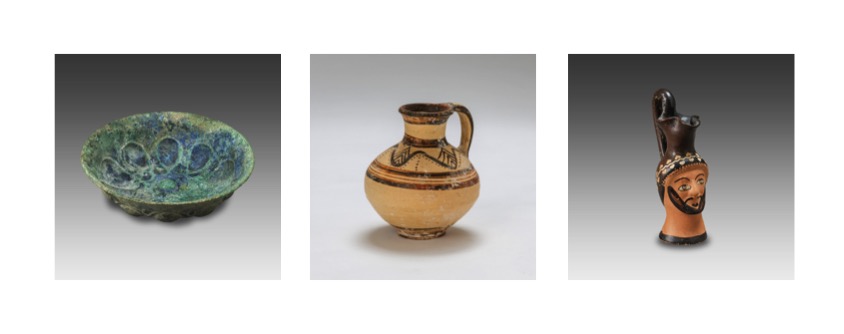
Present in all cultures since very remote times, the vine – or vitis vinifera – has always been closely linked to the history and life of humanity. Its fruit, the grape, was first consumed as food by the Paleolithic societies living on the shores of the Mediterranean, before being used in the manufacture of beverages.
Grape growing then spread south, in Mesopotamia; it reached Egypt circa 3000 B.C., and Greece circa 2500 B.C., as evidenced by the many jars excavated by archaeologists, which are known to have contained wine thanks to the seals and the labels that are still attached on them.
Like the harvest, grape-picking was an occasion for great celebrations, during which religion and popular jubilation joyfully mingled. The grapes were initially stomped on by foot, to the sound of flutes or lyres, and then pressed in a large press. Meanwhile, offerings were made to the gods to show thanks for the good harvest.
Wine Production in Ancient Rome
In ancient Rome, the whole cycle of the wine production took place between two symbolic celebrations dedicated to wine (the daily life of the ancients was punctuated by religious rituals, festivals and public games, to the point that only 55 working days are counted in the Roman calendar … o tempora, o mores!): the vinalia priora, held on April 23, during which the wine of the previous autumn’s pressing was sampled. Jupiter was offered a libation of this sacred wine, blessed by a high priest and poured into a ditch outside the temple of Venus. This celebration was traced to Aeneas who vowed to consecrate the grape harvest to Jupiter if he could defeat Turnus (Ovid, Fasti, IV, 879-896). This wine was made from the latest harvest and no one was allowed to drink it. The celebration was called the “festival of the new wine”. And the vinalia rustica, held on August 19, before the harvest and grape-pressing; lambs were sacrificed as an offering to Jupiter and the priest picked the first bunch of grapes.
Grape harvest, a major event of the fall season
Nowadays, the grape harvest is still a major event of the fall season and retains its festive nature. Some wine-growing sites even re-enact the ancient vinalia every year in the form of a life-size historical representation, combined with an archaeological approach. In fact, using the writings of Columella, an agronomist, and Apicius, a gourmet, both famous in the 1st century A.D., experiments have been developed to produce Roman wines after the original ancient recipe. Whether for the mulsum, the turriculae or the carenum, over 200 plants were counted in the various processes of wine making, plus the other elements that were used in the manufacture of these wines: seawater, marble powder, clay powder, pitch, lime or defrutum (a highly concentrated syrup made by boiling down grape must, added to pomegranates, quince and herbs). The kind of ingredients that would cool down the most sensitive stomachs…
As for the adventurous tasters, save the date, the next edition of the Vinalia is already scheduled for September 2015!
Vinalia, the Festival of Wine and Ancient cookery, St. Romain-en-Gal.
or also:
Roman Harvest Festival at the Mas des Tourelles, Beaucaire.
Martine Bouilloux

